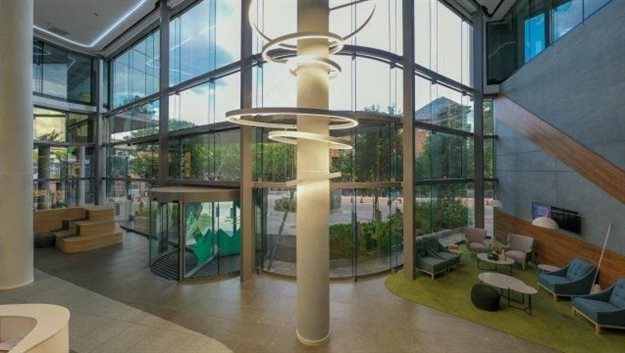
Related
Top stories


Logistics & TransportIata urges global safeguards for aircraft systems as 5G/6G rollout continues
16 hours

AgricultureAgricultural exports from Africa are not doing well. Four ways to change that
Lilac Nachum 17 hours



Engineering, design and advisory company Aurecon collaborated closely with Growthpoint Properties and the rest of the professional team, including AECOM as quantity surveyor and structural engineer and AMA Architects to align the building design with the requirements of the Green Star rating system of the Green Building Council of South Africa.
“The question arose as to whether or not we could extend this process to include WELL certification,” explains Yovka Raytcheva-Schaap, associate and environmentally sustainable design (ESD) consultant at Aurecon.
“We needed to rigorously consider the requirements of the WELL certification scheme we were working with, and to align the design at the very beginning of the project, as there were 26 pre-conditions to be met for such a certification, many of which had physical impact on the architectural and mechanical services elements.”
Raytcheva-Schaap elaborates: “As we were developing the design in accordance with the Green Star requirements, we also started unpacking the requirements for WELL certification in parallel, and what we could do to leverage the Green Star design to allow for compliance with the WELL Building Standard.”

Based in the United States, IWBI administers the WELL Building Standard, a global rating system that focuses exclusively on the ways that buildings and everything in them can improve occupant and visitor comfort, drive better choices and generally enhance health and wellness.
In conjunction with an IWBI representative, a number of equivalent requirements between the two rating schemes were confirmed, such as ventilation, volatile organic compounds reduction and the thermal and acoustic performance of the building. The rigorous assessment process undertaken incorporated input from the entire professional team and developer.

Stressing that Green Star and the WELL Building Standard are complementary, Raytcheva-Schaap highlights the main difference between the two as being that the former focuses on environmental performance, while WELL centres on occupant health and comfort. “It is the first global rating scheme that looks specifically at how buildings are designed to promote the well-being of their occupants.”
Another major difference is that the WELL certification scheme is a performance-based scheme, meaning that the project was subjected to a site performance verification for its compliance to targeted criteria within the different categories of the scheme, namely Air, Water, Nourishment, Light, Fitness, Comfort and Mind. Extensive on-site testing of air and water quality, and assessment of intervention implementation, was carried out over three days by IWBI representatives.